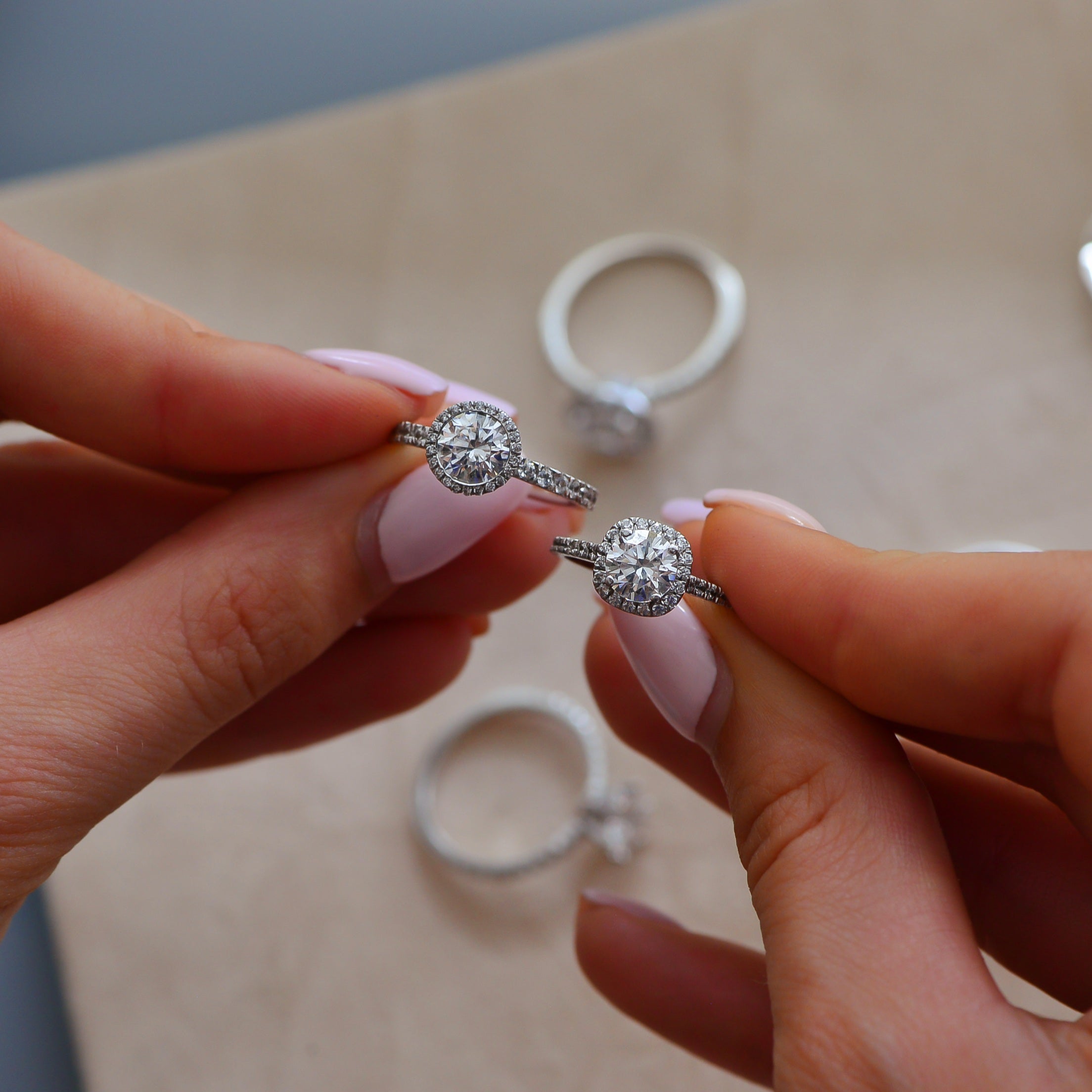Άρθρο: A Guide to understanding and choosing the best quality VVS Diamonds

A Guide to understanding and choosing the best quality VVS Diamonds
Are you looking for a diamond that is both stylish and timeless? Do you want something with maximum sparkle and brilliance? Then, a VVS diamond is your best bet. But before making a purchase, it's essential to understand what exactly VVS diamonds are and how to choose the best quality VVS diamond.

VVS stands for Very Very Slightly included, meaning that these diamonds have no visible flaws when viewed under 10x magnification. Because of this, they offer unmatched clarity and quality and can last generations if properly cared for. Plus, their beauty makes them the perfect choice for an engagement ring or any special occasion jewelry piece.
When shopping for VVS diamonds, it's important to pay attention to the four Cs: cut, color, clarity, and carat weight. Each one plays a role in determining the stone's value and should be considered when selecting a VVS diamond.
THE CUT determines how much light enters and exits the stone, resulting in the sparkle factor. A good quality VVS diamond will have ideal proportions and symmetry to ensure maximum light performance. A poor-quality cut will reduce the sparkle of your stone, so always go with a higher-quality option when buying a VVS diamond.

COLOR GRADE: it's all about personal preference here, but typically most people prefer colorless or nearly colourless diamonds as they offer more brilliance than coloured diamonds. When choosing a VVS diamond, look for stones that have been graded D-F on the GIA colour scale, which indicates little to no hue within the diamond itself.
CLARITY: VVS diamonds are already very high on the clarity scale, but there are two grades within VVS – VVS1 and VVS2 – so check both carefully before deciding which one you want. Generally speaking, a higher clarity grade results in a bigger price tag, so decide what fits into your budget before committing to any particular grade.
CARAT WEIGHT: it affects both the price and size of your stone, so be sure to pick something that works for your design and setting style.
Choosing the best quality VVS Diamond can be intimidating because many factors are involved, but if you pay close attention to all four Cs mentioned above, you should have no problem finding something beautiful! With their exceptional fire, sparkle, and brilliance – not to mention longevity – it's easy to see why they remain some of the most popular diamond choices today!
THE GRADING SYSTEM OF HIGH-QUALITY STONES

When it comes to evaluating and grading the quality of precious stones, gemologists use various methods and standards. One such system is the VVS grading system, an international standard for assessing the quality of very fine gemstones such as diamonds, sapphires, and rubies. The letter "VVS" stand for "Very, Very Slightly included" and is one of the highest grades a stone can have in terms of clarity.
A diamond or other precious stone can be assessed for its grade in size, shape, colour, and clarity, with clarity being the most important factor. A VVS grade indicates that a stone has almost no flaws or blemishes that can be seen with the naked eye and is usually accompanied by perfect symmetry and sharp facets. To assess a stone's clarity using this system, experts use microscopes or magnifying lenses to inspect each facet of the stone in minute detail. Any tiny irregularities or marks on the surface may indicate that a stone is not pure enough to achieve VVS status.
In general, diamonds or other precious stones are considered VVS when their imperfections (or inclusions) are so small that they cannot be seen even under 10x magnification. There are three main categories under which VVS stones can be classified - VS1 (Very Slightly Included 1), VS2 (Very Slightly Included 2), and IF (Internally Flawless). Of these three grades, IF is generally considered the rarest and highest quality as it denotes a diamond with no inclusions when examined with a 10x loupe.
When assessing a diamond's quality using the VVS system, specific parameters such as the number, size, color, and position of any existing flaws should be considered before assigning a final grade. Generally speaking, higher-graded diamonds tend to cost more than lower-graded ones as they are deemed to have greater rarity value due to their superior optical characteristics. As such, determining the exact grade of a diamond is essential for ensuring an accurate appraisal of its overall worth.
Although it takes trained experts to accurately grade diamonds according to VVS standards, buyers looking for very fine stones should always look out for those marked as VVS1 or better - especially if they plan on investing in their purchase. Remember that no matter what type of gemstone you buy, care must always be taken when storing them, as improper handling can damage even those graded at high levels, such as VVS1.
TIPS FOR IDENTIFYING HIGH-QUALITY STONES
When it comes to diamonds, the most essential quality to look for is the clarity grade. VVS diamonds are some of the best quality and rarest stones, with VVS1 being a diamond's highest clarity rating. When shopping for a VVS diamond, here are 10 tips that you should follow to ensure you're getting a high-quality stone:
- Check if the diamond has a certification from an independent lab like GIA or AGS. This will provide evidence that the stone is a genuine VVS diamond.
- Ask to see a variety of stones at different angles and check if there are any inclusions visible to the naked eye – this can help you determine the stone's clarity grade.
- Compare your stone to similar stones at different angles to ensure that yours is more transparent than other stones of equal clarity grade.
- Ensure that the diamond's culet (the point at its base) is not chipped or cracked – this could lower its value significantly.
- Make sure there are no scratches or blemishes on its surface – even small marks can detract from its overall beauty and brilliance.
- Check if there is any discoloration in the diamond – any tints of yellow, grey, or brown could indicate that it's not pure white and thus not as valuable as other stones with a better color rating.
- Consider using advanced technology like magnification loupes and ultra-violet lights to take a closer look at your potential purchase and detect any inclusions that may not be visible with your naked eye alone.
- If possible, find out what cutting process was used when creating your diamond and who created it - these details could add to its overall worthiness since superior craftsmanship results in higher prices for gemstones such as VVS diamonds!
- Do some research into pricing trends so you can get an idea of what is considered a fair price for specific grades of VVS diamonds, and be wary of sellers offering unusually low prices for their gems - these could potentially be fraudulent diamonds which would end up costing more than expected later on down the line!
- Finally, remember that no two diamonds are alike, so don't be afraid to ask questions and make sure you're fully comfortable with your decision before making any purchases - investing in high-quality stones such as VVS diamonds is an important decision that shouldn't be taken lightly!


